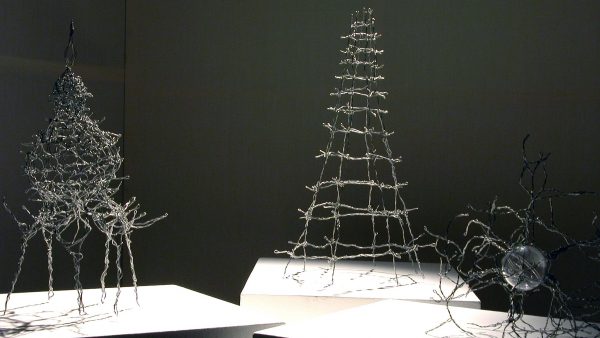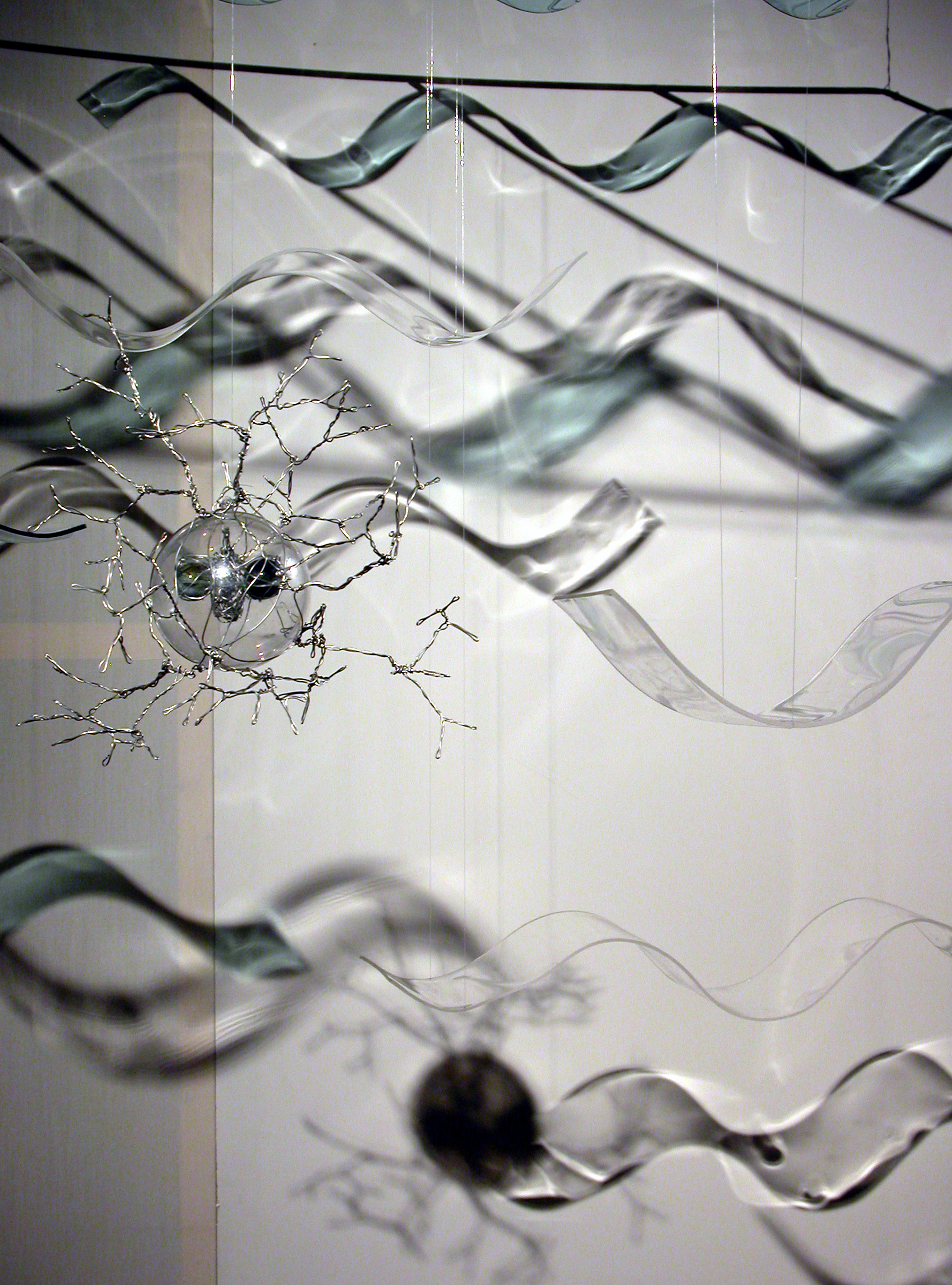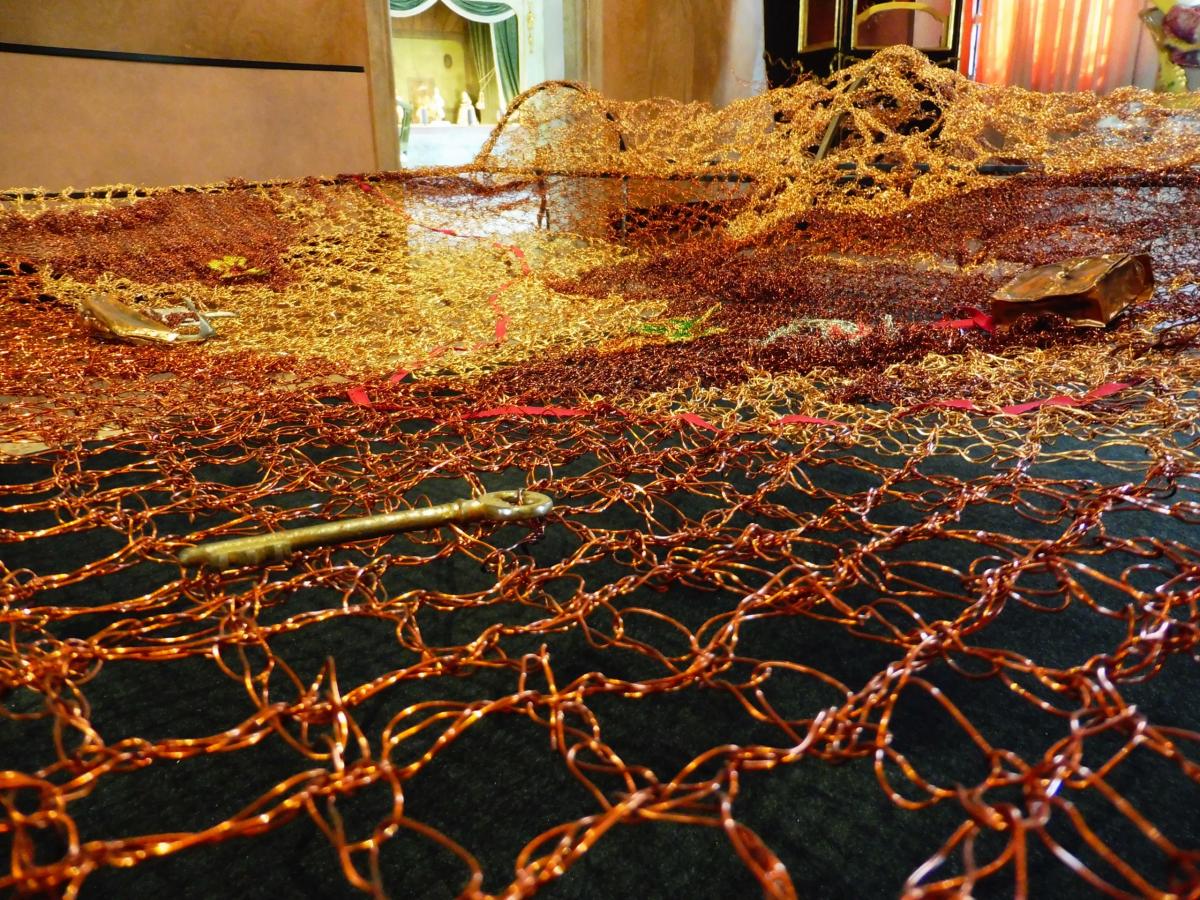Penso che la cosa più importante da fare per la nostra epoca sia prendersi cura del nostro pianeta ed occuparci del cambiamento climatico e dei suoi effetti sul pianeta.
La mia opera da quasi 20 anni è legata a questo tema. La natura, nel suo complesso, è la componente fondamentale del mio lavoro. È un modo per tornare alle mie radici. Ho vissuto la mia giovinezza nelle campagne di una zona industrializzata e ho amato il senso di sicurezza che avevo circondata da terra, pietre, piante, animali. Era semplicemente normale vivere una vita del genere, ma poi, durante l’adolescenza, ho percepito una minaccia quando ho letto dell’ipotesi di Gaia in un libro di James Lovelock. Avevo paura e ho iniziato a leggere documenti scientifici rendendomi conto che la crescente industrializzazione e lo sviluppo dei paesi emergenti influenzavano fortemente il riscaldamento globale. Oggi vivo a Venezia, una quasi Submerged Venice, Venezia sommersa, fragile ed affascinante, alla mercè del cambiamento, in modo sempre più tangibile. Ho affidato all’arte, potente strumento di comunicazione, il compito di dire che un futuro migliore è tutto quello di cui abbiamo bisogno. La speranza è quella di creare un modo di pensare positivo
Il percorso artistico sul tema del cambiamento climatico è iniziato con una mostra “Reperti archeologici dal futuro” (2004) che suggeriva una riflessione su arte e scienza, sul rapporto conflittuale tra uomo e natura, temi che nel corso degli anni si sono fatti sempre più urgenti, come più urgente è diventato il desiderio di creare un’arte sentinella di e per il cambiamento. Negli anni si sono susseguite opere (Gaia 2016, la Mappa è il tesoro 2016, Fiore terra 2015, P-Untrici 2022, Il Mare nel cuore 2022), performance (Il filo di rame dell’artista che denuncia i cambiamenti climatici, Rainews – 2018), mostre (Selvatica 2016, Bifore, trifore, dorifore 2018, Submerged Venice, 2022) con le quali ho indagato la natura come dato scientifico ma considerandone anche l’aspetto mitico e magico, e ho affidato all’arte il compito di ri-creare forme vive e parlanti, capaci di ridestare coscienze. Ho ripercorso i segreti della vita nell’infinitamente piccolo, calandomi negli abissi dell’elemento primordiale, l’acqua, e facendo riemergere creature (radiolari, pesci) che combinano materiali eterni (rame e metalli) in trame e forme leggere, volutamente incerte perché il mondo organico non è perfetto e per questo è vivo. La regolare irregolarità della natura mi ha sempre affascinato, “ la vita rifuggiva dall’esattezza, la riteneva micidiale, quasi come il mistero stesso della morte“, dice Thomas Mann (Montagna incantata). Le mie strutture hanno uno sviluppo modulare ma non inseguono geometrie fisse, crescono attorno all’immagine a cui si ispirano e prendono vita nel gioco di luci e ombre che generano quando fluttuano nell’aria.
” La vera scienza, vale a dire la riflessione su come funziona il mondo e la realizzazione di semplici esperimenti per provare le teorie che vengono elaborate è simile all’attività creativa parallela:
l’arte, e viene meglio realizzata senza clamori e grandi spese”. (J. Lovelock, Gaia: manuale di medicina planetaria, Zanichelli, 1992)
I think the most important thing to do for our time is to take care of our planet and deal with the climate change and its effects on the planet.
My work for almost 20 years has been linked to this theme. Nature, as a whole, is the fundamental component of my work. It’s a way to get back to my roots. I lived my youth in the countryside of an industrialized area and I loved the sense of security that I had surrounded by earth, stones, plants, animals. It was simply normal to live such a life, but then, in my adolescence, I sensed a threat when I read about Gaia’s hypothesis in a book by James Lovelock. I was afraid and started reading scientific documents realizing that the growing industrialization and development of emerging countries strongly influenced global warming. Today I live in Venice, an almost Submerged Venice, Venice submerged, fragile and fascinating, at the mercy of change, in an increasingly tangible way. I entrusted art, a powerful communication tool, , with the task of saying that a better future is all that we need. The hope is to create a positive way of thinking.
The artistic journey on the theme of climate change began with an exhibition “Archaeological finds from the future” (2004) that suggested a reflection on art and science, on the conflictual relationship between man and nature, themes that over the years have become increasingly urgent, how more urgent became the desire to create a sentinel art of and for change. Over the years have followed works (Gaia 2016, the Map is the treasure 2016, Flower-earth 2015, P-Untrici 2022, Il mare nel cuore 2022), performance (The artist who denounces climate change, Rainews – 2018), exhibitions (Selvatica 2016, Bifore, trifore, dorifore 2018, Submerged Venice, 2022) with which I investigated nature as a scientific fact but also considering the mythical and magical aspect, and I entrusted art with the task of re-creating living and talking forms, capable of awakening consciences. I searched the secrets of life in the infinitely small, plunging into the depths of the primordial element, water, and bringing forth creatures (radiolaria, fish) that combine eternal materials (copper and metals) in light textures and shapes, deliberately uncertain because the organic world is not perfect and for this reason it is alive. The regular irregularity of nature has always fascinated me, “life shunned accuracy, considered it deadly, almost like the mystery of death itself”, says Thomas Mann (Enchanted Mountain). My structures have a modular development but do not follow fixed geometries, they grow around the image they are inspired by and come to life in the game of lights and shadows that generate when they float in the air.
“True science, that is to say, the reflection on how the world works and the realization of simple experiments to prove the theories that are elaborated, is similar to the parallel creative activity:
art, and is better realized without fuss and great expense“.
(J. Lovelock, Gaia: manual of planetary medicine, Zanichelli, 1992 – free translation)
| HOME | ABOUT | ARTWORKS | EXHIBITIONS |
| NEWS | PRESS | SHOP | CONTACT |









